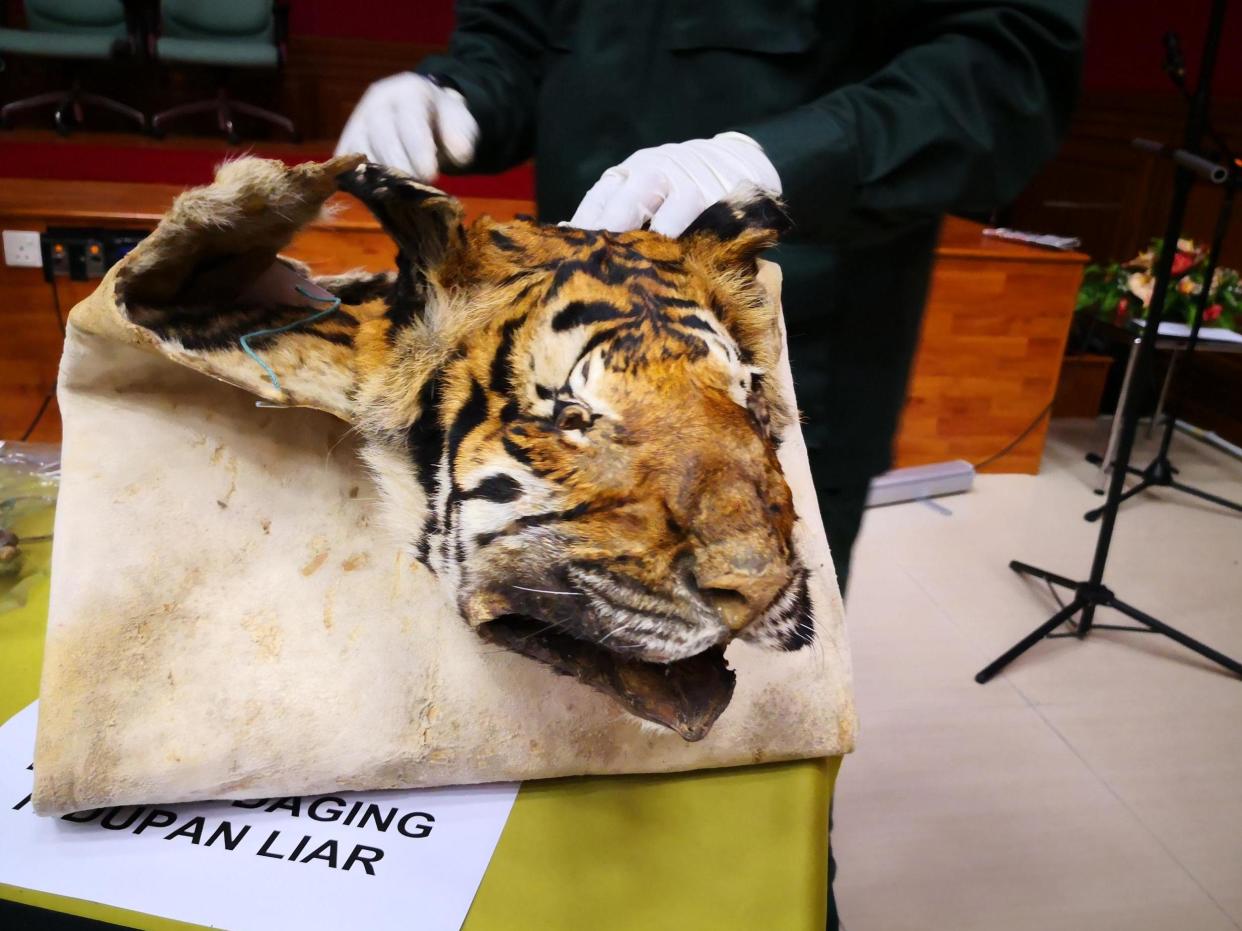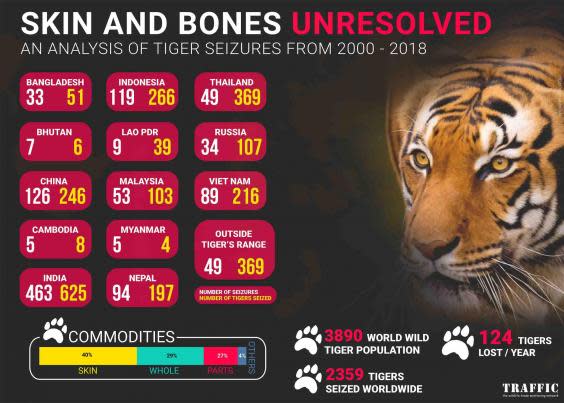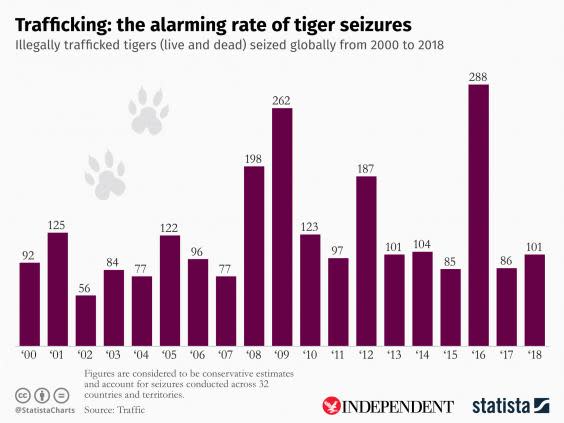At least two dead tigers seized each week from smugglers threatening big cats’ future, study says

More than two carcasses of endangered tigers are being seized every week from smugglers who are driving the big cats towards extinction, research has found.
Officials in 32 countries discovered 2,359 dead tigers between 2000 and last year – a number described as a “conservative” estimate.
The figure equates to 131 animals a year – or two a week, many of them from “tiger breeding farms” whose conditions have been condemned as appalling by wildlife experts.
Wild tiger numbers have dropped both because their habitats are being destroyed and because they are hunted illegally for their skins, bones, meat and tonics for the “traditional Asian medicine” trade. Only about 3,900 remain.
In Indonesia, which has the third-highest seizure rate, a dozen skins were found earlier this month in a workshop making traditional dance masks.
The study, by conservation charity Traffic, said high numbers of body parts seized by officials came from captive sources – dubbed “tiger farms” – where the animals are bred to feed demand for parts in east Asia.
More than half (58 per cent) of the tigers seized in Thailand and 30 per cent in Vietnam came from such breeding facilities, which are considered to stimulate demand for the animal products.
Most of Vietnam’s trafficking cases involved carcasses from Laos, which sits between Thailand and Vietnam, where the report authors suspect populations of tigers are bred in captivity.

“Seizures of tigers from captive facilities serve as a stark reminder that such facilities seriously undermine conservation efforts to safeguard this species and provide opportunities for laundering and other illegal activities,” said Ramacandra Wong, from Traffic in southeast Asia.
Tigers, which are found in 13 states across Asia, are classed as endangered by the IUCN Red List of threatened species.
On average almost 58 whole skins were seized each year.
India, with the world’s largest wild population of the big cats, had the highest number of seizures, accounting for more than one in four (626) over the 18 years.
The yearly average seizures in Indonesia rose four-fold in that time, the report said.
The trade “undermines the international commitments made to double the number of wild tigers by 2022, and… even a low level of offtake from populations above natural mortalities could be hugely detrimental to tiger populations,” said Kanitha Krishnasamy, the charity’s southeast Asia director.
“Such a high number of tigers entering illegal trade is unacceptable.”

The study coincides with discussions on the trade in big cats at the Convention in International Trade in Endangered Species of Wild Fauna and Flora (Cites).
“The fact that more and more are linked to captive facilities, including some that have crossed borders in trade, shows a disregard for decisions and commitment made at the highest level under Cites,” Ms Krishnasamy added.
“We have done these analyses four times now, and year on year, it’s more bad news for tigers.”
Last month Vietnamese authorities seized seven frozen carcasses from a vehicle in Hanoi from a suspect believed to have smuggled tigers from Laos for years.
Seizures were also made in Taiwan and Mexico.
http://players.brightcove.net/624246174001/default_default/index.html?videoId=5837728067001
Support free-thinking journalism and subscribe to Independent Minds
Read more
More than half of world’s forest wildlife lost in 40 years
India tiger population surges to 3,000 offering ‘hope and reassurance’
Outrage as tiger beaten to death by mob with spears and machetes
Tiger found lying on bed inside house while sheltering from floods

 Yahoo News
Yahoo News 
